The kettlebell lateral raise is a compound exercise that primarily targets the shoulders, but also engages several other muscles including the trapezius, serratus anterior, and core. This exercise mimics the movement of a traditional dumbbell lateral raise but with the added challenge of using an unstable weight. It is a great way to strengthen and tone the shoulders, improve posture, and increase stability in the upper body.
What is a Kettlebell Lateral Raise?
The Kettlebell lateral raise is a highly effective strength training exercise that focuses on the upper body, especially the deltoid muscles in the shoulders. Using a kettlebell instead of a traditional dumbbell engages the muscles in a different way due to its unique shape and weight distribution, increasing the challenge and effectiveness of the workout.
In addition to the shoulders, this exercise also indirectly targets other muscles such as the trapezius in the upper back, serratus anterior near the rib cage, and the core muscles, enhancing overall upper body strength, stability, and endurance. This exercise is suitable for both beginners and advanced individuals, as the intensity can easily be adjusted by changing the weight of the kettlebell.
Importance of Kettlebell Lateral Raise
The importance of the Kettlebell Lateral Raise cannot be overstated. It serves as a comprehensive upper-body workout, emphasizing not only muscle strength, but also enhancing muscle endurance and stability. Its unique weight distribution challenges the body to maintain balance, thereby engaging and strengthening the core. The exercise’s focus on the deltoids and the trapezius muscles promotes improved posture, often mitigating common shoulder and back issues.
Furthermore, due to the adjustable intensity based on the kettlebell’s weight, it offers a scalable challenge, making it a versatile exercise catering to different fitness levels and goals. Ultimately, the this is a valuable addition to any fitness regime, contributing to overall upper-body strength, stability, posture, and muscular definition
Muscle Targeted
The Kettlebell Lateral Raise primarily targets the deltoid muscles, particularly the medial and lateral heads. These muscles are located in the shoulders and are responsible for raising the arms to the side. However, this exercise also engages other muscles such as the trapezius, which helps to maintain proper posture and stability throughout the movement.
The core muscles are also activated during the exercise in order to maintain balance and control. By targeting multiple muscle groups, this exercise provides a comprehensive upper-body workout. By targeting multiple muscle groups, the Kettlebell Lateral Raise provides a comprehensive upper-body workout.
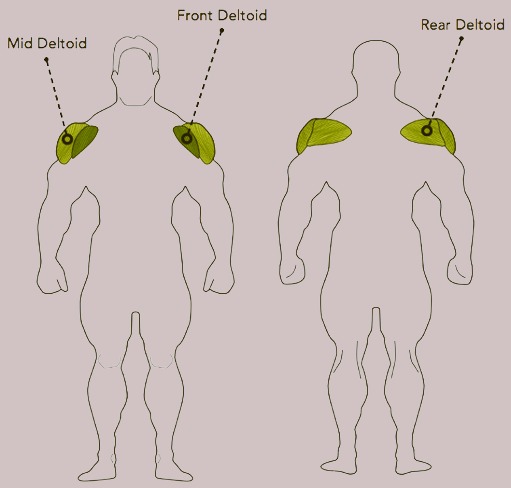
Benefits of the Kettlebell Lateral Raise
- Strengthens Shoulder Muscles: The primary muscle worked in a kettlebell lateral raise is the deltoid, which forms the rounded contour of the shoulder. Regularly performing this exercise can improve the strength and endurance of these muscles, enhancing your ability to perform daily activities that require shoulder use.
- Promotes Muscle Growth: This exercise can induce hypertrophy in the deltoid muscles, leading to increased muscle size. A consistent routine of this exercise can help in toning and sculpting your shoulders.
- Improves Shoulder Stability: By working out your deltoids, you enhance the stability of your shoulder joints. This is particularly beneficial for athletes who engage in sports that require strong and stable shoulders.
- Engages Core Muscles: Although primarily a shoulder exercise, but it also engages your core muscles due to the need to maintain balance and posture during the lift. This added engagement can help strengthen your core over time.
- Increases Range of Motion: Regularly performing this exercise can help increase your shoulder’s range of motion. This can lead to improved flexibility and decreased risk of injury.
- Offers Variable Resistance: The unique shape of the kettlebell provides a different resistance curve compared to dumbbells. This can make the exercise more challenging and potentially more effective in muscle building.
- Enhances Functional Fitness: The kettlebell lateral raise is not just about aesthetics. The strength and stability gained from this exercise can aid in improving functional fitness, which is essential for performing everyday tasks efficiently.
Step-by-Step Guide on How to Perform Kettlebell Lateral Raise
The Kettlebell Lateral Raise is an effective exercise that targets the shoulders, specifically the lateral deltoids. It is a great choice for both beginners and fitness enthusiasts looking to strengthen and tone their shoulder muscles. Whether you are a beginner or you are fitness enthusiast always start with a lighter kettlebell and focus on maintaining proper form throughout the movement. As you progress, you can gradually increase the weight to continue challenging yourself. Remember to engage your core and keep a slight bend in your elbows for optimal results.
Preparation for the Exercise
- Choose the Right Kettlebell: Start by choosing a kettlebell of appropriate weight. If you’re new to this exercise, it’s best to start with a lighter weight and gradually increase as your strength improves.
- Set Up Your Space: Ensure you have enough space around you to perform the exercise without hitting anything.
- Stand Correctly: Stand upright with your feet shoulder-width apart. Hold a kettlebell in each hand with your palms facing inward towards your body.
Detailed Breakdown of the Movement
- Start Position: With your knees slightly bent, hold the kettlebells at your sides. Keep your back straight and engage your core.
- Raise the Kettlebells: Slowly lift the kettlebells to your sides while keeping your arms slightly bent at the elbows. Continue raising them until they are parallel to the floor. Ensure that your hands do not go higher than your shoulders.
- Hold: Once your arms are parallel to the floor, hold the position for a second. Make sure to keep your torso stationary and avoid using your back or tilting your body to lift the weights. The lifting should be done by your shoulders.
- Lower the Kettlebells: Slowly lower the kettlebells back to the starting position in a controlled manner. Avoid letting the kettlebells drop quickly as controlling the descent is part of the exercise.
- Repeat: Perform your desired number of repetitions and sets.
Remember, proper form is crucial when performing a kettlebell lateral raise. Ensure that you’re lifting the weights with your shoulders and not your back or neck. If you feel any discomfort or pain during the exercise, stop immediately and consult with a fitness professional or physical therapist.
Kettlebell Lateral Raise Variations
Seated Kettlebell Lateral Raise
This variation is performed while seated, which helps to isolate the shoulder muscles more as it eliminates the momentum that can be used when standing.
- Sit on a bench with your back straight and feet flat on the floor.
- Hold a kettlebell in each hand at arm’s length, palms facing towards your body.
- Keeping your elbows slightly bent, raise your arms to the side until they’re parallel to the floor
- Lower the kettlebells slowly back to the starting position.
Benefits:
- More focus on the shoulder muscles due to reduced momentum.
- Helps improve posture as you need to keep your back straight throughout the exercise.
Front Kettlebell Lateral Raise
This variation involves raising the kettlebells in front of your body, targeting more of the anterior (front) deltoids.
- Stand upright with a kettlebell in each hand, palms facing towards your body.
- Keeping your elbows slightly bent, raise the kettlebells in front of you until they’re at shoulder height.
- Lower the kettlebells slowly back to the starting position.
Benefits:
- Targets the anterior deltoids, helping to build frontal shoulder strength.
- Can help improve shoulder mobility and flexibility.
Kneeling Kettlebell Lateral Raise
Performing the exercise from a kneeling position changes the stability requirements, engaging your core more.
- Kneel on the floor with one knee, holding a kettlebell in each hand at your sides.
- Keeping your elbows slightly bent, raise your arms to the sides until they’re parallel to the floor.
- Lower the kettlebells slowly back to the starting position.
Benefits:
- Engages your core more due to the increased stability requirements.
- Can help improve balance and coordination.
Remember to always maintain proper form when performing these exercises. Start with a lighter weight and gradually increase as your strength improves.
Common Mistakes to Avoid
- Using Too Much Weight: One common mistake is using a kettlebell that is too heavy, which can lead to improper form and potential injury. To avoid this, start with a lighter weight and gradually increase as your strength improves.
- Lifting the Kettlebells Too High: If you lift the kettlebells higher than shoulder level, it can put unnecessary strain on your shoulders. Ensure your hands do not go higher than your shoulders when you raise the kettlebells.
- Not Keeping the Core Engaged: Failing to engage your core can lead to an unstable posture and potential back injury. Always keep your core engaged throughout the exercise to maintain proper form and balance.
- Bending the Arms Too Much: While a slight bend in the elbows is necessary, bending them too much can shift the focus away from the shoulders. Keep your arms relatively straight, with only a slight bend at the elbows.
- Using the Back or Neck to Lift: Some people use their back or neck muscles instead of their shoulders to lift weights. This can lead to strain or injury. Remember to lift the kettlebells using your shoulder muscles.
- Not Controlling the Descent: Letting the kettlebells drop quickly instead of lowering them in a controlled manner can lead to potential injury and reduce the effectiveness of the exercise. Always lower the kettlebells slowly and in control.
- Not Maintaining a Straight Back: Arching or rounding your back can lead to injuries. Keep your back straight throughout the exercise.
To avoid these mistakes, it can be helpful to perform the exercise in front of a mirror to check your form or consider hiring a personal trainer to guide you through the correct techniques.
Kettlebell vs Dumbbell Raise
Kettlebell Raises: Kettlebell raises are a versatile exercise that targets multiple muscle groups, including the shoulders, arms, and core. The unique shape of the kettlebell adds an element of instability, engaging more stabilizing muscles during the movement. Kettlebell raises can help improve shoulder strength and stability.
Dumbbell Raises: Dumbbell raises are a classic exercise for targeting the shoulder muscles. They can be performed in various variations, such as front raises, lateral raises, or rear raises, to target different parts of the shoulder muscles. Dumbbell raises are effective for building shoulder strength and enhancing overall upper-body strength.
Both kettlebell raises and dumbbell raises are effective exercises for developing shoulder strength and stability. The choice between them can depend on personal preference, the desired level of muscle engagement, and the specific training goals.
Pros and Cons of Kettlebell & Dumbbell Raises
| Kettlebell Raises | Dumbbell Raises | |
|---|---|---|
| Pros | 1. The off-centered weight of kettlebells may enhance muscle engagement. 2. Can improve grip strength. 3. Provides a different range of motion due to the shape and design of the kettlebell. | 1. Dumbbells provide a balanced weight, which some people find easier to handle. 2. More common and available in most gyms. 3. Easier to increment weight as you progress. |
| Cons | 1. Not as readily available in some gyms. 2. Harder to increment weight due to larger weight jumps between kettlebells. | 1. May not engage the muscles in the same way due to the balanced weight. 2. Grip strength may not be improved as much. |
When to Use Each Type of Weight
- Kettlebells: Kettlebells can be a great choice if you’re looking to challenge your muscles in a slightly different way due to the off-centered weight. They can also be beneficial if you’re looking to improve your grip strength or if you want to incorporate more functional, full-body movements into your workouts.
- Dumbbells: Dumbbells can be a good option if you’re new to lateral raises or weightlifting in general, as the balanced weight can be easier to handle. They’re also a great choice if you’re looking to incrementally increase the weight you’re lifting, as dumbbells often come in smaller weight increments than kettlebells.
Remember, the best type of weight for you will depend on your personal fitness goals, experience level, and personal preference.
Incorporating Kettlebell Lateral Raise into Your Workout Routine
Incorporating the kettlebell lateral raise into your workout routine can be a great way to target the shoulders, arms, and core for stability. Below are some ways you could include this exercise in your routine:
- As a Part of a Shoulder Workout: The kettlebell lateral raise is an excellent exercise for targeting the deltoids, the muscles that cap your shoulders. You can incorporate this exercise into your shoulder workout day along with other shoulder exercises like overhead presses or front raises.
- In Full-Body Workouts: Since kettlebell exercises often engage multiple muscle groups, they’re great for full-body workouts. You can include the kettlebell lateral raise in a circuit of kettlebell exercises, moving from one exercise to the next with minimal rest.
- Supersets: Pair the kettlebell lateral raise with another exercise that targets a different muscle group for a superset. For example, you might do a set of kettlebell lateral raises immediately followed by a set of kettlebell swings or squats.
- In High-Intensity Interval Training (HIIT): The kettlebell lateral raise can be included in a HIIT workout. This type of training involves short bursts of high-intensity exercise followed by brief periods of rest or lower-intensity exercise.
- For Endurance Training: Using a lighter weight and performing higher repetitions of kettlebell lateral raises can help improve muscular endurance. This could be beneficial for athletes or anyone looking to improve their overall fitness level.
Tips to Maximize Results
Maximizing results with the kettlebell lateral raise involves focusing on your form, consistency, and overall workout routine. Here are some tips to help you get the most out of this exercise:
Master the Form: Proper form is critical for preventing injury and ensuring that you’re effectively working the targeted muscles. Your core should be engaged, your back straight, and your gaze forward. Raise the kettlebell out to the side, keeping your arm slightly bent at the elbow, and then lower it back down in a controlled manner.
Control the Motion: Avoid using momentum to swing the kettlebell up and down. The upward and downward movements should both be controlled, which will engage your muscles throughout the entire range of motion.
Focus on the Mind-Muscle Connection: Really focus on the muscles you’re working (deltoids) during the exercise. This mind-muscle connection can help improve muscle activation and lead to better results.
Consistency is Key: Like any exercise, consistency is crucial. Incorporate the kettlebell lateral raise into your regular workout routine to see progress over time.
Progressive Overload: To continue making progress, you need to gradually increase the intensity of your workouts over time. This could involve increasing the weight of the kettlebell, adding more reps or sets, or decreasing rest time between sets.
Balanced Workout Routine: While the kettlebell lateral raise is a great exercise for targeting the shoulders, it’s important to have a balanced workout routine that works for all muscle groups. This will help prevent muscle imbalances and promote overall body strength and fitness.
Recovery: Don’t forget about recovery. Your muscles need time to repair and grow after a workout. Make sure you’re getting enough sleep, eating a balanced diet, and taking rest days as needed.
Seek Professional Guidance: If you’re new to kettlebells or not sure if you’re doing exercise correctly, don’t hesitate to seek advice from a fitness professional. They can provide guidance on proper form and technique, as well as personalized advice for your fitness goals.
Frequent Question Answers
By addressing the following frequently asked questions, we hope to provide clarity and guidance on incorporating the Kettlebell Lateral Raise into your fitness routine. Remember to listen to your body, start at an appropriate level, and gradually progress for optimal results.
| Question | Answer |
|---|---|
| What muscles does the kettlebell lateral raise target? | The kettlebell lateral raise primarily targets the deltoids, which are the muscles that cap your shoulders. It also engages your core and arm muscles for stability. |
| How heavy should my kettlebell be for lateral raises? | This will vary depending on your fitness level. It’s best to start with a weight that is challenging but manageable, and you can maintain proper form. As you get stronger, you can gradually increase the weight. |
| How many sets and reps should I do? | A common recommendation is to start with 2-3 sets of 8-12 repetitions. However, this can vary based on your fitness level and goals. If you’re aiming for strength, you might use a heavier weight and perform fewer reps. If you’re aiming for endurance, you might use a lighter weight and perform more reps. |
| Can I do kettlebell lateral raises every day? | While it’s technically possible to do kettlebell lateral raises every day, it’s generally not recommended because your muscles need time to recover and grow after a workout. A common recommendation is to wait at least 48 hours before working the same muscle group again. |
| Is the kettlebell lateral raise safe for beginners? | Yes, however, beginners should start with a light weight and focus on mastering the form. It may also be helpful to seek guidance from a fitness professional when first starting out. |
| Can I do kettlebell lateral raises if I have a shoulder injury? | If you have a shoulder injury or any other health concerns, it’s important to consult with a healthcare provider or a physical therapist before attempting new exercises. They can provide personalized advice based on your situation. |
Conclusion
In conclusion, the kettlebell lateral raise is an effective exercise for strengthening and toning the shoulder muscles. However, like any exercise, it’s vital to use proper form and control the movement to maximize benefits and reduce the risk of injury.
Beginners should start with a lighter weight and gradually increase as their strength improves. It’s also important to remember that consistency, a balanced workout routine, and adequate recovery time are key factors in achieving fitness goals.
Finally, always consult with a fitness professional or healthcare provider if you’re unsure about performing a new exercise or if you have any health concerns.
Sources
- Men’s Health. (n.d.). The 7 Best Shoulder Exercises for a Bigger Physique. Retrieved November 21, 2023, from Men’s Health
- Shape. (n.d.). Strength Training Tips You Need to Know. Retrieved November 21, 2023, from Shape
- Self. (n.d.). How to Use Kettlebells. Retrieved November 21, 2023, from Self
- Healthline. (n.d.). Kettlebell Workout: What It Does and How to Do It. Retrieved November 21, 2023, from Healthline
- Muscle & Strength. (n.d.). Kettlebell Lateral Raise. Retrieved November 21, 2023, from Muscle & Strength
- Verywell Fit. (n.d.). How to Do a Kettlebell Swing: Techniques, Benefits, Variations. Retrieved November 21, 2023, from Verywell Fit
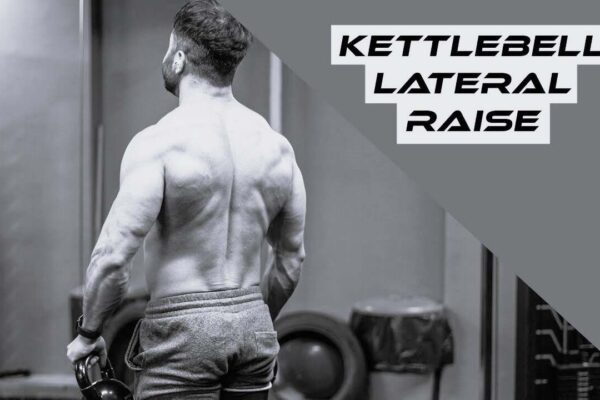


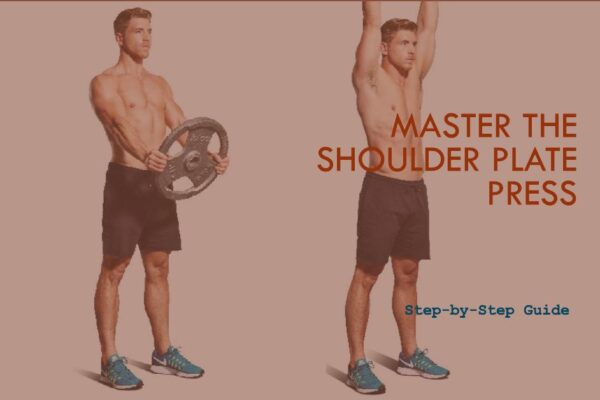
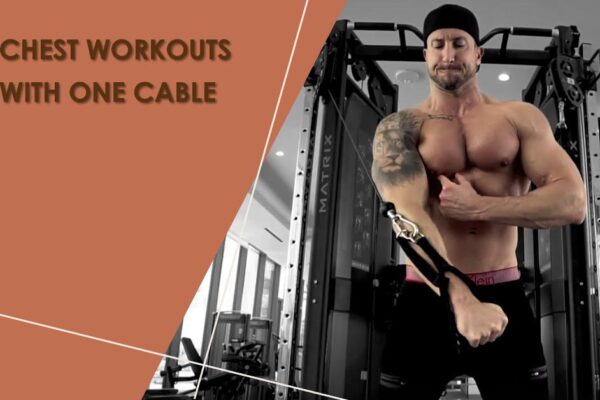
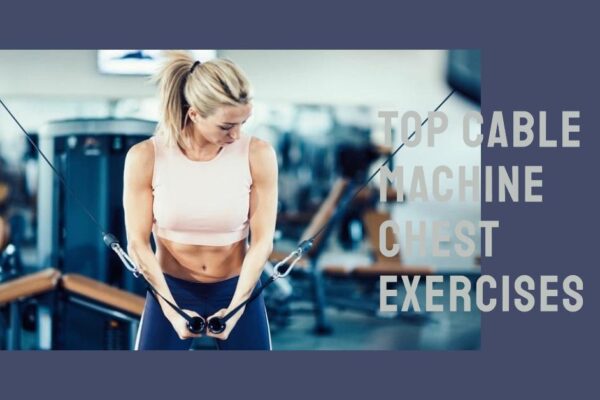
Leave a Reply